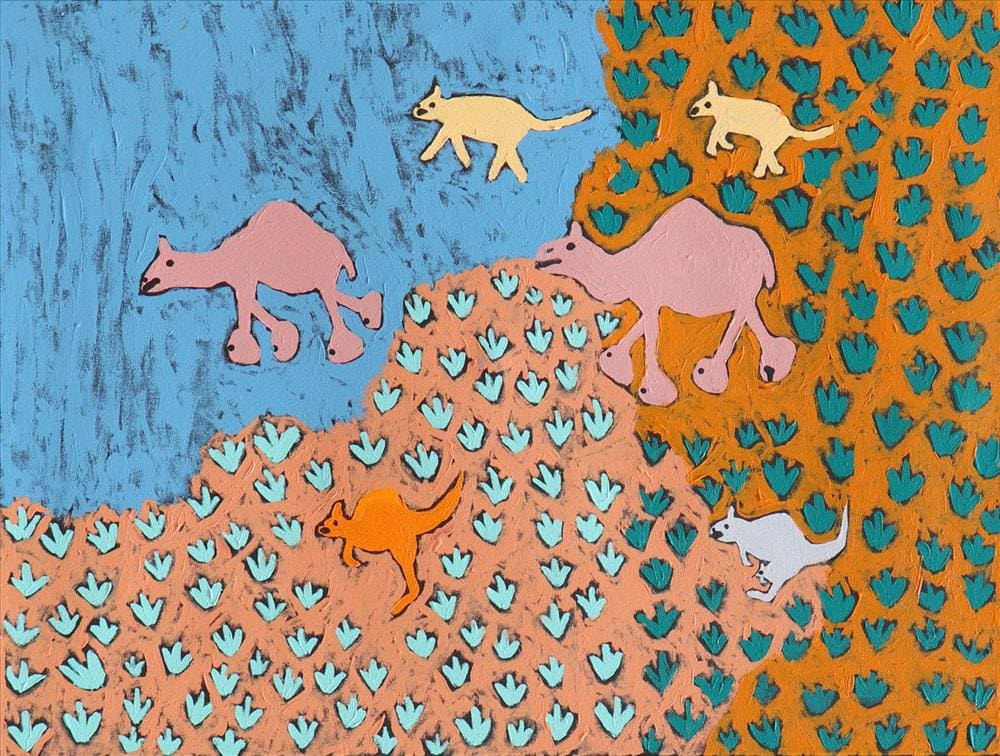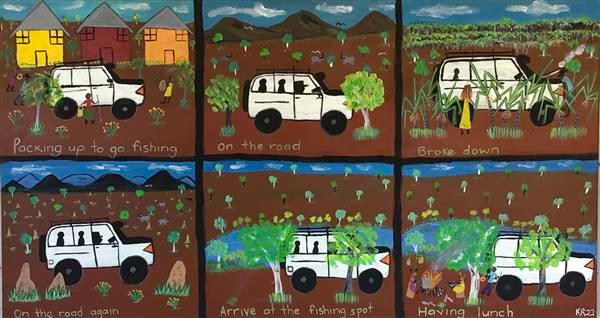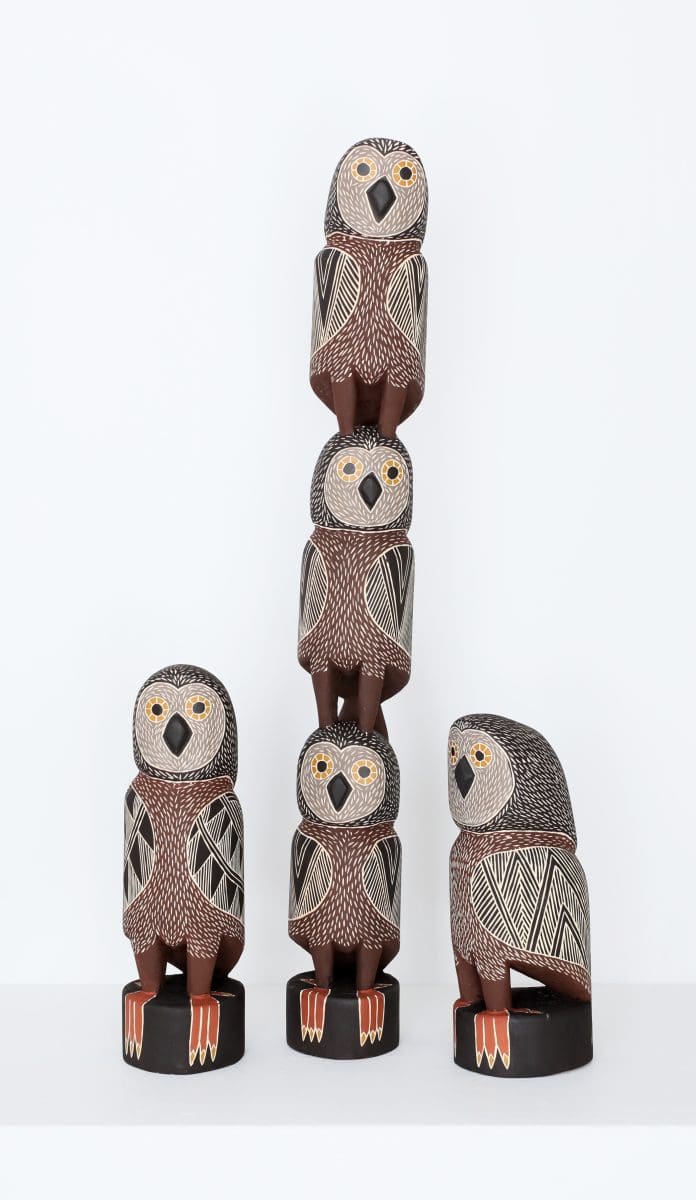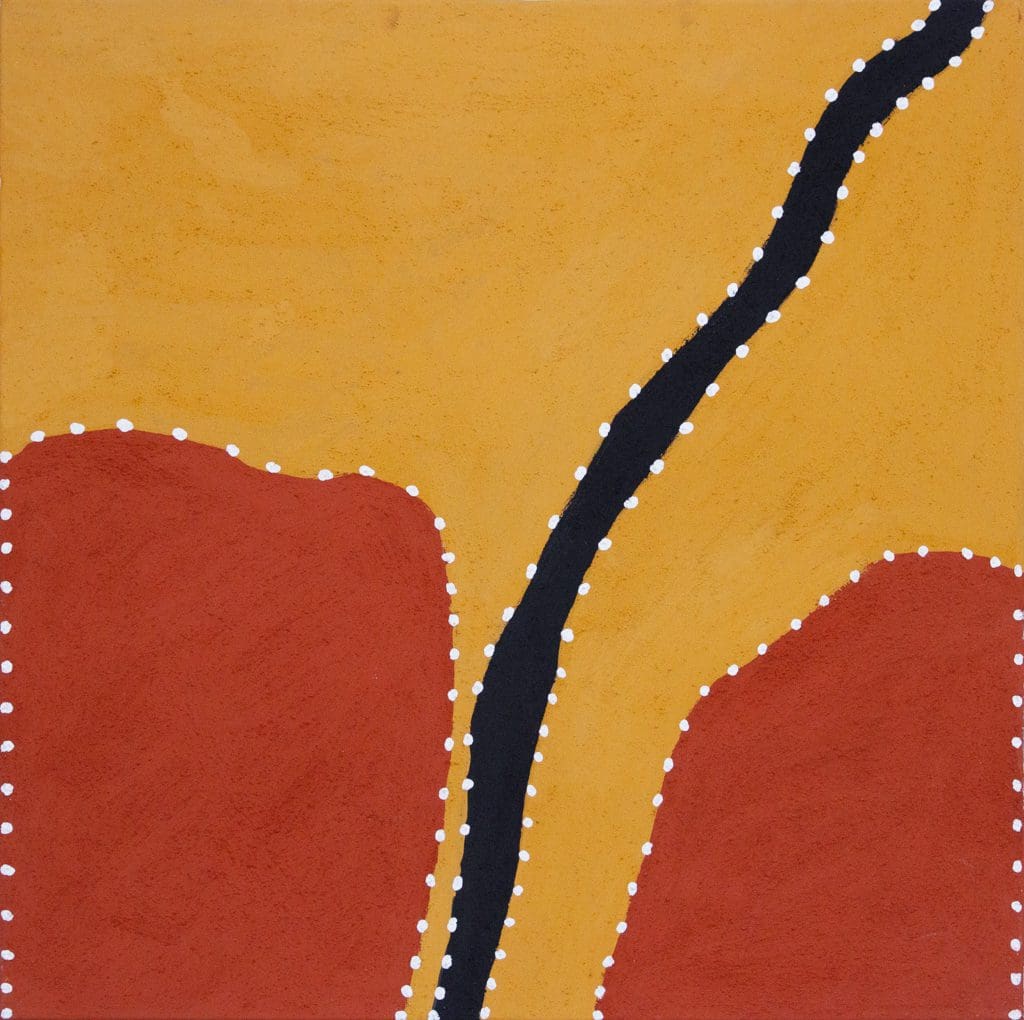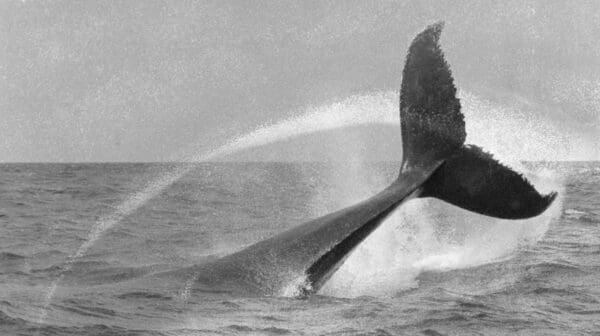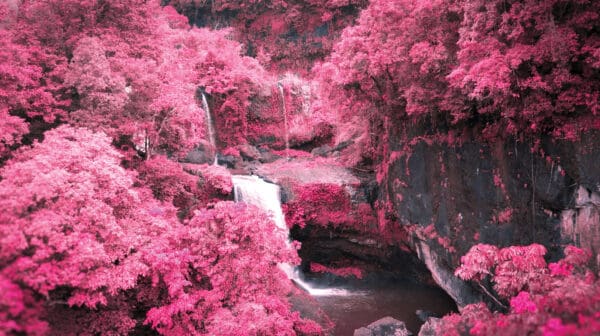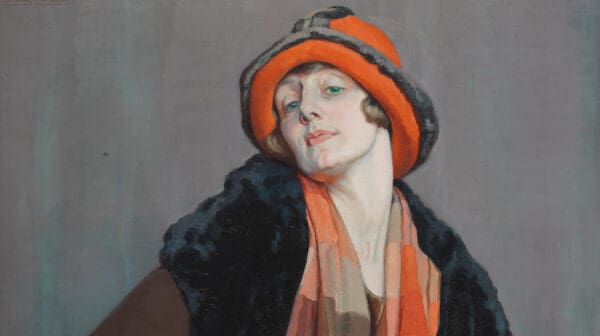The concept of Country, as defined by Aboriginal and Torres Strait Islander peoples, is not only a reference to landscape, waterways and seas. Country also includes complex understandings of culture, law, language, belief, custom, knowledge, family, identity and beyond. The exhibition Our Country, at Brunswick Street Gallery, explores what Country represents for Indigenous artists working across five art centres in the Northern Territory and Western Australia.
Our Country is an absorbing display of stylistic diversity, colour and innovation, and includes painting of various modes, sculpture and video works. The artists and artistic collaborations include Gordon Barney (Warmun Art Centre), Karen Rogers and Jake Duczynski (Ngukurr Art Centre), Jill Daniels (Ngukurr Art Centre), Aaron Pei Pie (Tjarlirli and Kalkukatjara Art), Judy Manany and Megan Yunupingu (Elcho Island Arts), and Gutiŋarra Yunupingu (Buku-Larrŋgay Mulka Centre). Rogers, Manany, and Megan Yunupingu have also contributed solo works for the exhibition.
Rogers, a celebrated Ngukurr artist, has curated the exhibition in partnership with the director of Brunswick Street Gallery, Sean Smith. In creating a platform for artists to respond to Country, according to their own lives and experiences, Rogers emphasises that connection to Country involves an association with environment that crosses time and sustains a relationship with ancestors.
“This exhibition shows what is ancient and what is still very much alive—our Country,” Rogers says. “A long time ago, when ancestors were around . . . they could survive without all the modern things we take for granted. They used to follow the seasons, eat various bush tucker, and survive by reading the land from knowledge passed from generation to generation. We are ancestors of these first peoples. No matter how much has changed for us, we are connected to our Country more than ever. It is deep inside us, it’s in our heart. These artworks are our way of passing that knowledge on to future generations. When I look at this exhibition, I see ancestors looking back at me and I feel immensely proud of who I am.”
Rogers’s painting, Broke Down, 2022, reflects this union of the contemporary and the ancient, with a narrative series of pictures that depict a fishing trip undertaken in a four-wheel-drive. Other artists, such as Pei Pie, take a slightly more abstract approach to painting, while Manany’s sculptural works explore Country through the motif of an owl. “When she sees the owl when she is out on Country, she knows that her ancestors are there with her,” says Rogers.
Among the moving image works, is the film Maykarraŋ by Gutiŋarra Yunupingu. For Yunupiŋu, this film is an evocative reminder of culture and identity. “There are too many things around me in the outside world telling me where to go, telling me where to stand,” explains Yunupiŋu. “Like Maykarraŋ, the gecko lizard that makes the lightning, the distractions catch my eye and attract my mind. But my foundation is strong. The gapan (white clay) which I paint on my head [in the film] grounds me to my ancestors and my ceremonial law. It focuses my mind and reminds me who I am.”
The exhibition came about after Rogers and Smith reached out to art centres, encouraging their artists to respond to the idea of Country. This resulted in the exhibition’s confluence of diverse imagery, perspectives and styles. “As all communities have different lore and relationships with Country,” says Rogers, “it was up to them to decide what was appropriate.”
Indeed, another key element of the exhibition is how each artist channels startling individuality and originality into their works, serving to expand and reveal a deep understanding of Country. “The stories and representations are unique to each artist,” says Rogers. “You can really feel the power of each work. The space resonates with their energy, the energy of our ancestors.”
Our Country
Brunswick Street Gallery
2 June—19 June



